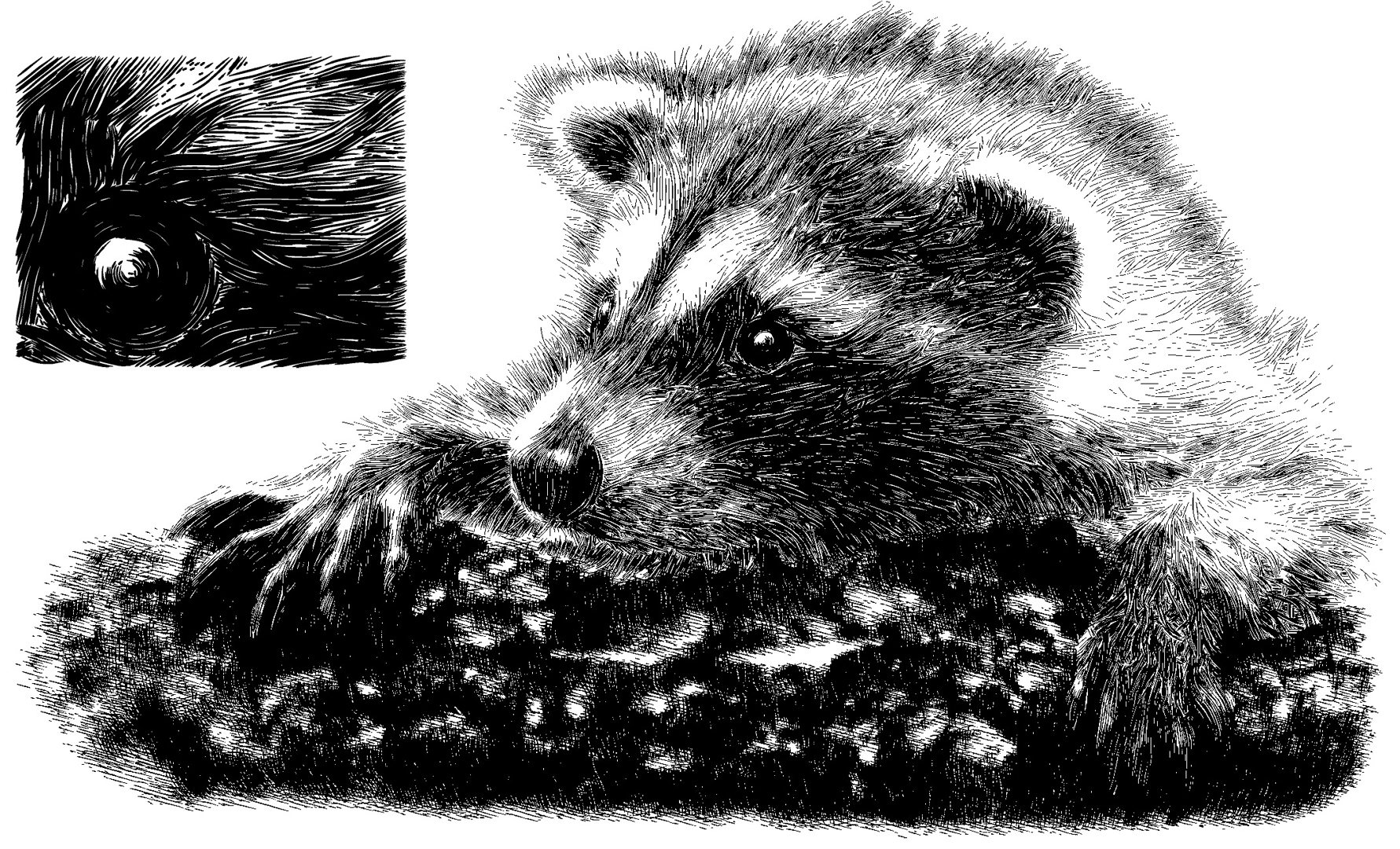“Orientable textures for image-based pen-and-ink illustration” by Salisbury, Hughes, Salesin and Wong
Conference:
Type(s):
Title:
- Orientable textures for image-based pen-and-ink illustration
Presenter(s)/Author(s):
Abstract:
We present an interactive system for creating pen-and-ink-style line drawings from greyscale images in which the strokes of the rendered illustration follow the features of the original image. The user, via new interaction techniques for editing a direction field, specifies an orientation for each region of the image; the computer draws oriented strokes, based on a user-specified set of example strokes, that achieve the same tone as the image via a new algorithm that compares an adaptively-blurred version of the current illustration to the target tone image. By aligning the direction field with surface orientations of the objects in the image, the user can create textures that appear attached to those objects instead of merely conveying their darkness. The result is a more compelling pen-and-ink illustration than was previously possible from 2D reference imagery.
References:
1. Debra Dooley and Michael Cohen. Automatic illustration of 3D geometric models: Lines. In Computer Graphics (1990 Symposium on Interactive 3D Graphics), pp. 77-82, March 1990.
2. Gershon Elber. Line art rendering via a coverage of isoparametric curves. IEEE Transactions on Visualization and Computer Graphics, 1(3):231-239, September 1995.
3. Ralph Gibson. Tropism: photographs. Aperture, New York, 1987.
4. S. Gupta and R. F. Sproull. Filtering edges for gray-scale displays. Computer Graphics (SIGGRAPH ’81 Proceedings), 15(3):1-5, August 1981.
5. Arthur L. Guptill. Rendering in Pen and Ink. Watson-Guptill Publications, New York, 1976.
6. Paul Haeberli. Paint by numbers: Abstract image representations. Computer Graphics, 24(4):207-214, August 1990.
7. John Lansdown and Simon Schofield. Expressive rendering: A review of nonphotorealistic techniques. IEEE Computer Graphics and Applications, 15(3):29-37, May 1995.
8. Frank Lohan. Pen and Ink Techniques. Contemporary Books, Inc., Chicago, 1978.
9. Barbara J. Meier. Painterly rendering for animation. In Holly Rushmeier, editor, SIGGRAPH 96 Conference Proceedings, pp. 477-484. Addison Wesley, August 1996.
10. Yachin Pnueli and Alfred M. Bruckstein. DigiDi~rer — a digital engraving system. The Visual Computer, 10(5):277-292, 1994.
11. Takafumi Saito and Tokiichiro Takahashi. Comprehensible rendering of 3-D shapes. Computer Graphics, 24(4): 197-206, August 1990.
12. Takafumi Saito and Tokiichiro Takahashi. NC machining with G- buffer method. Computer Graphics, 25(4):207-216, July 1991.
13. Michael E Salisbury, Sean E. Anderson, Ronen Barzel, and David H. Salesin. Interactive pen-and-ink illustration. In Andrew Glassner, editor, Proceedings of SIGGRAPH ’94, pp. 101-108. ACM Press, July 1994.
14. Mike Salisbury, Corin Anderson, Dani Lischinski, and David H. Salesin. Scale-dependent reproduction of pen-and-ink illustrations. In Holly Rushmeier, editor, SIGGRAPH 96 Conference Proceedings, pp. 461-468. Addison Wesley, August 1996.
15. Gary Simmons. The Technical Pen. Watson-Guptill Publications, New York, 1992.
16. Thomas Strothotte, Bernhard Preim, Andreas Raab, Jutta Schumann, and David R. Forsey. How to render frames and influence people. Computer Graphics Forum, 13(3):455-466, 1994. Eurographics ’94 Conference issue.
17. Georges Winkenbach and David H. Salesin. Computer-generated penand-ink illustration. In Andrew Glassner, editor, Proceedings of SIG- GRAPH ’94, pp. 91-100. ACM Press, July 1994.
18. Georges Winkenbach and David H. Salesin. Rendering free-form surfaces in pen and ink. In Holly Rushmeier, editor, SIGGRAPH 96 Conference Proceedings, pp. 469-476. Addison Wesley, August 1996.




